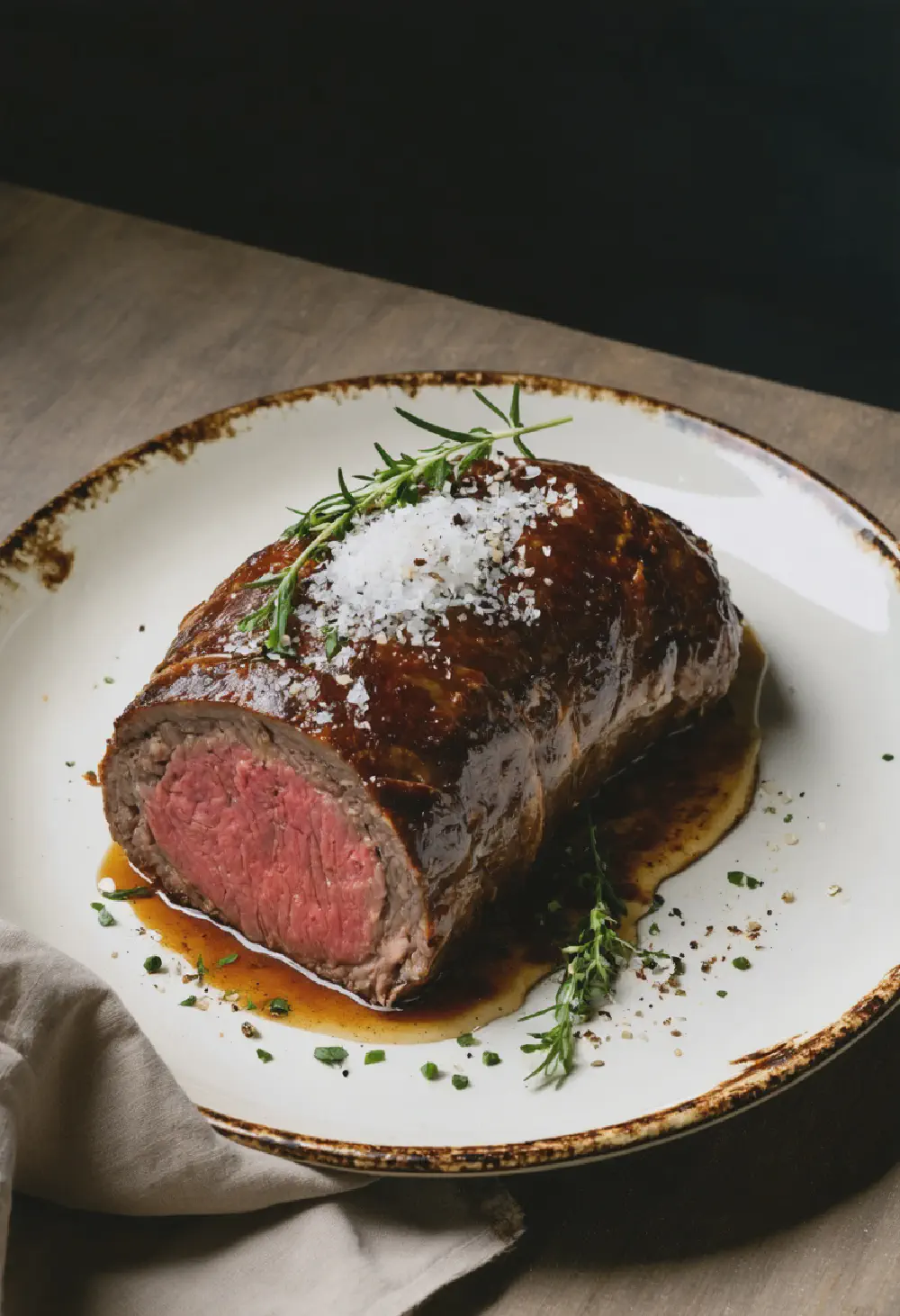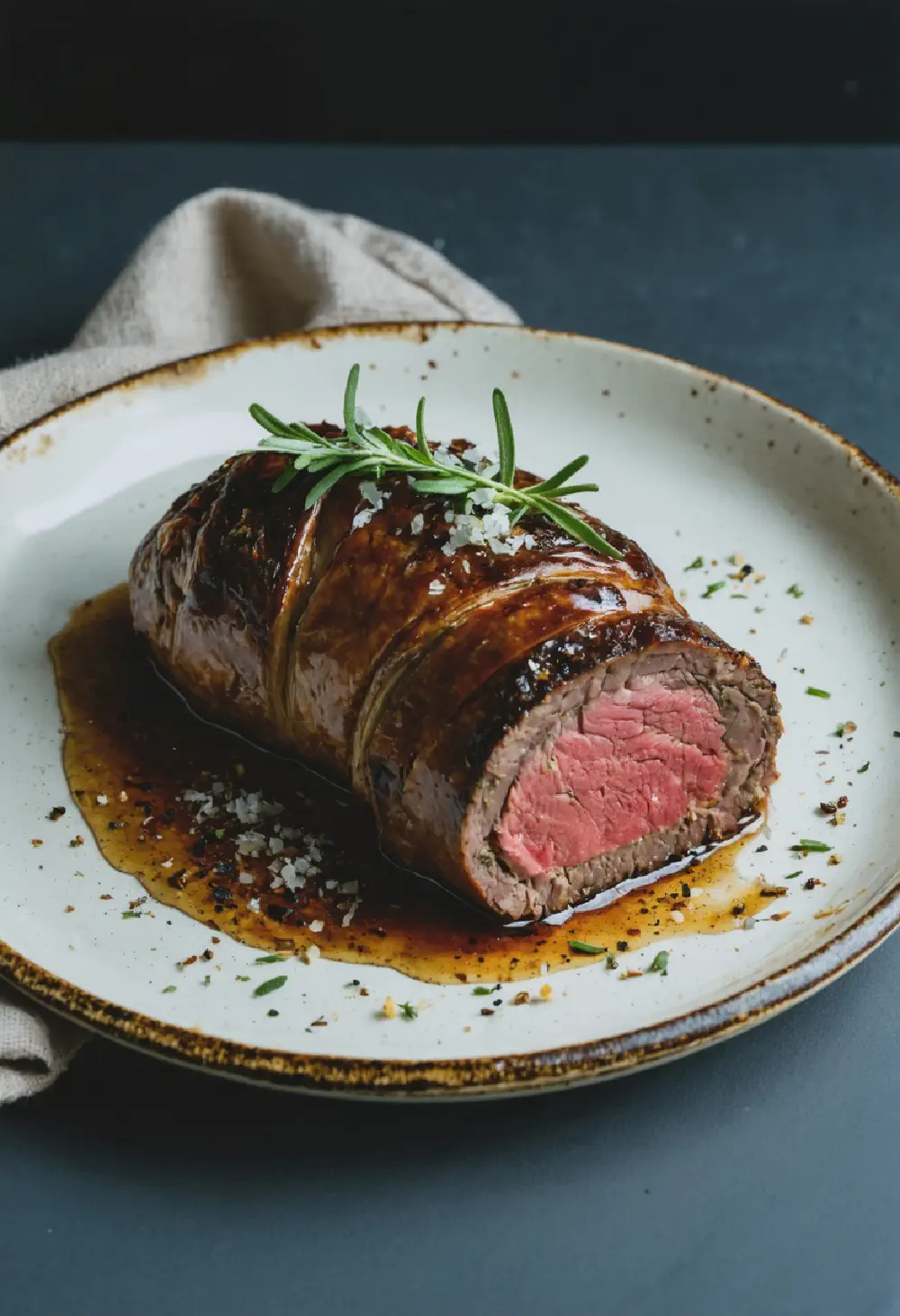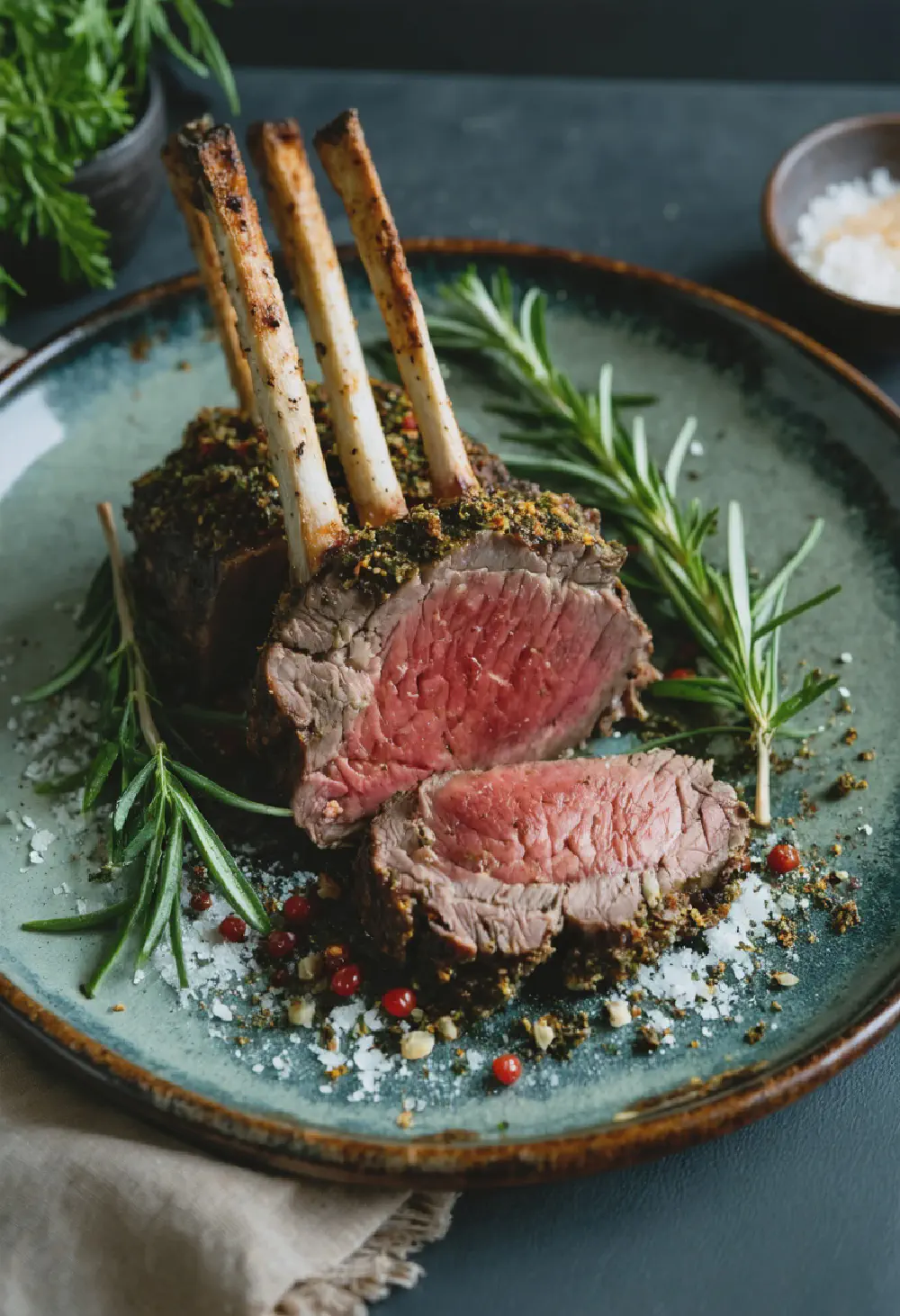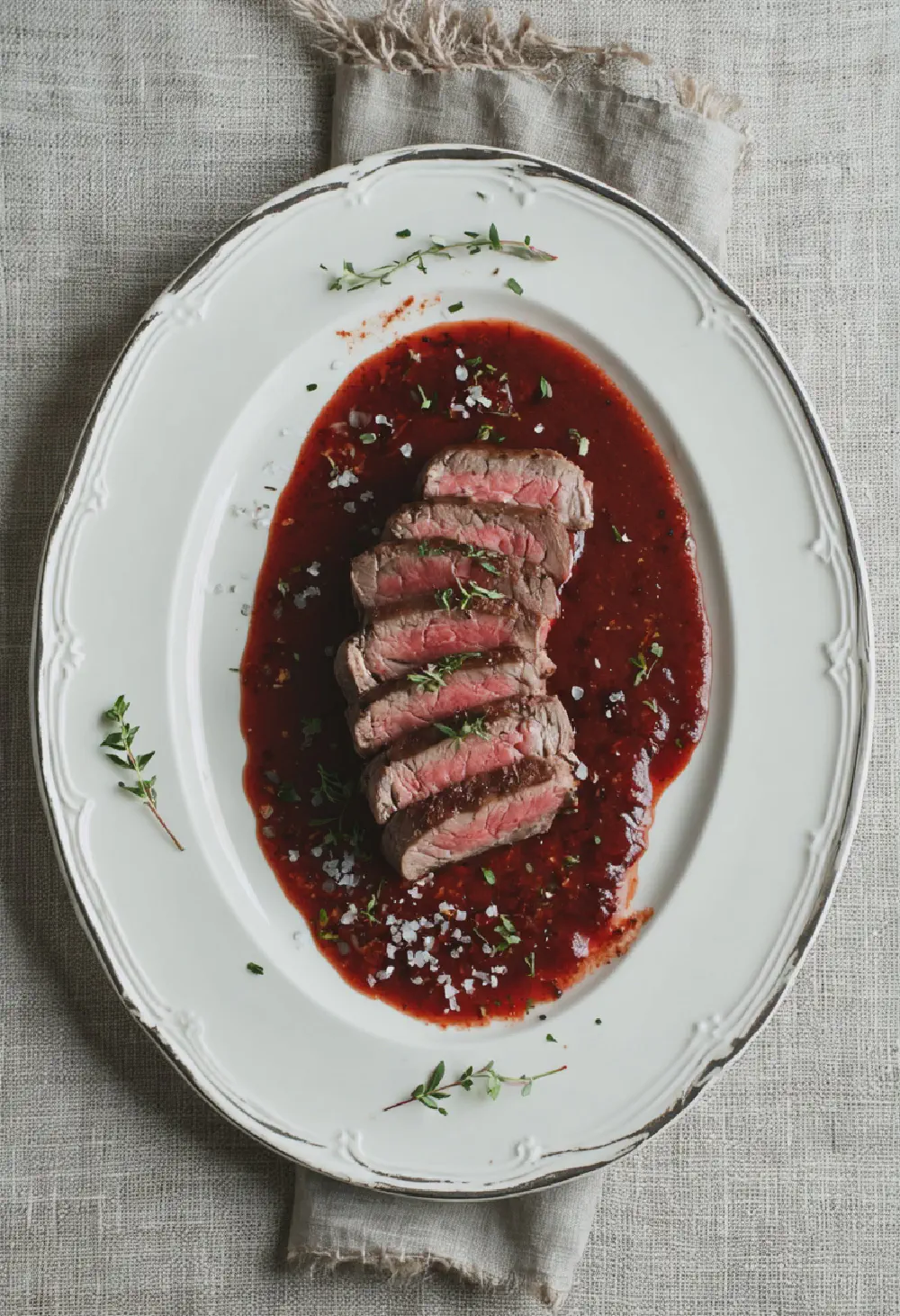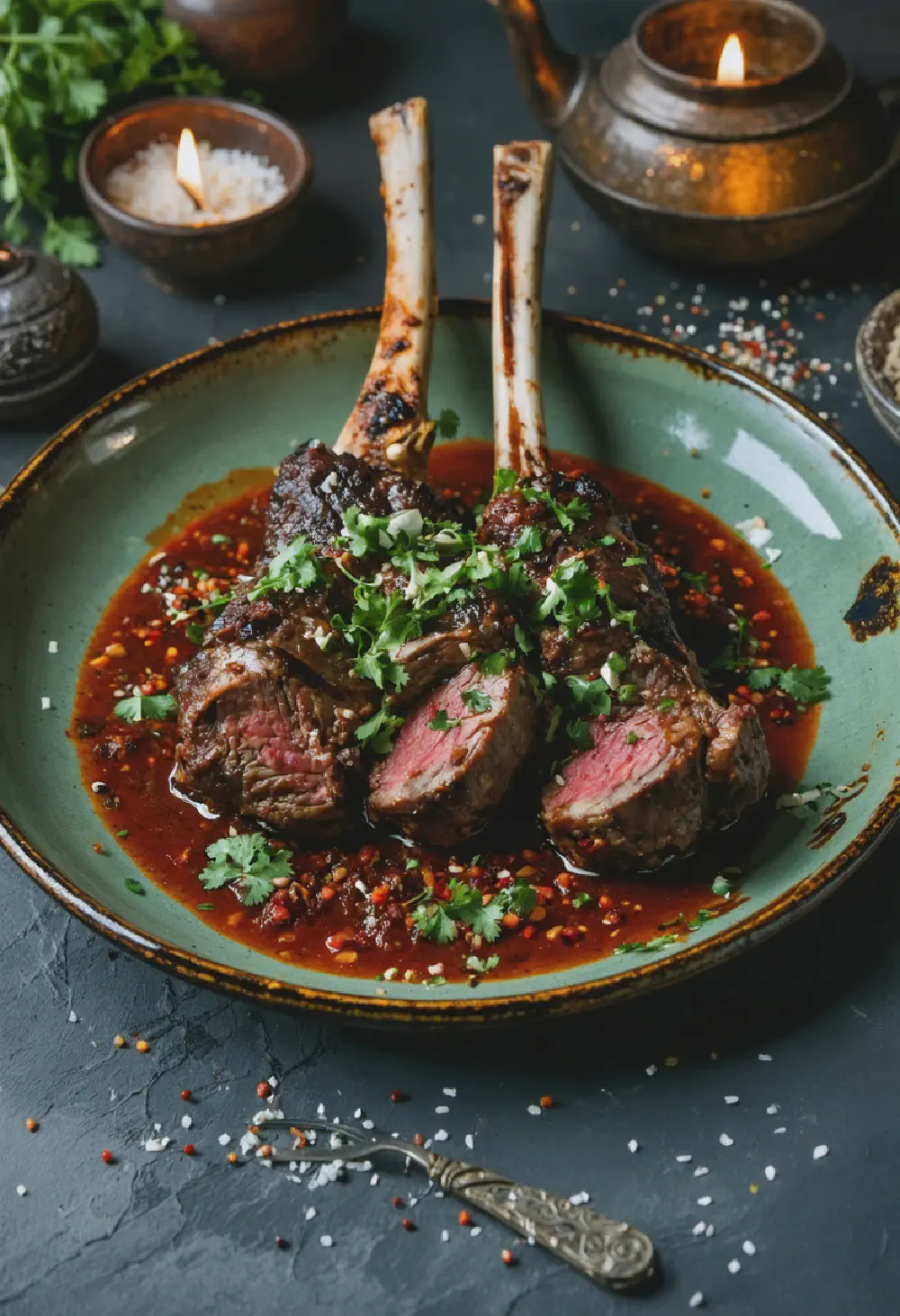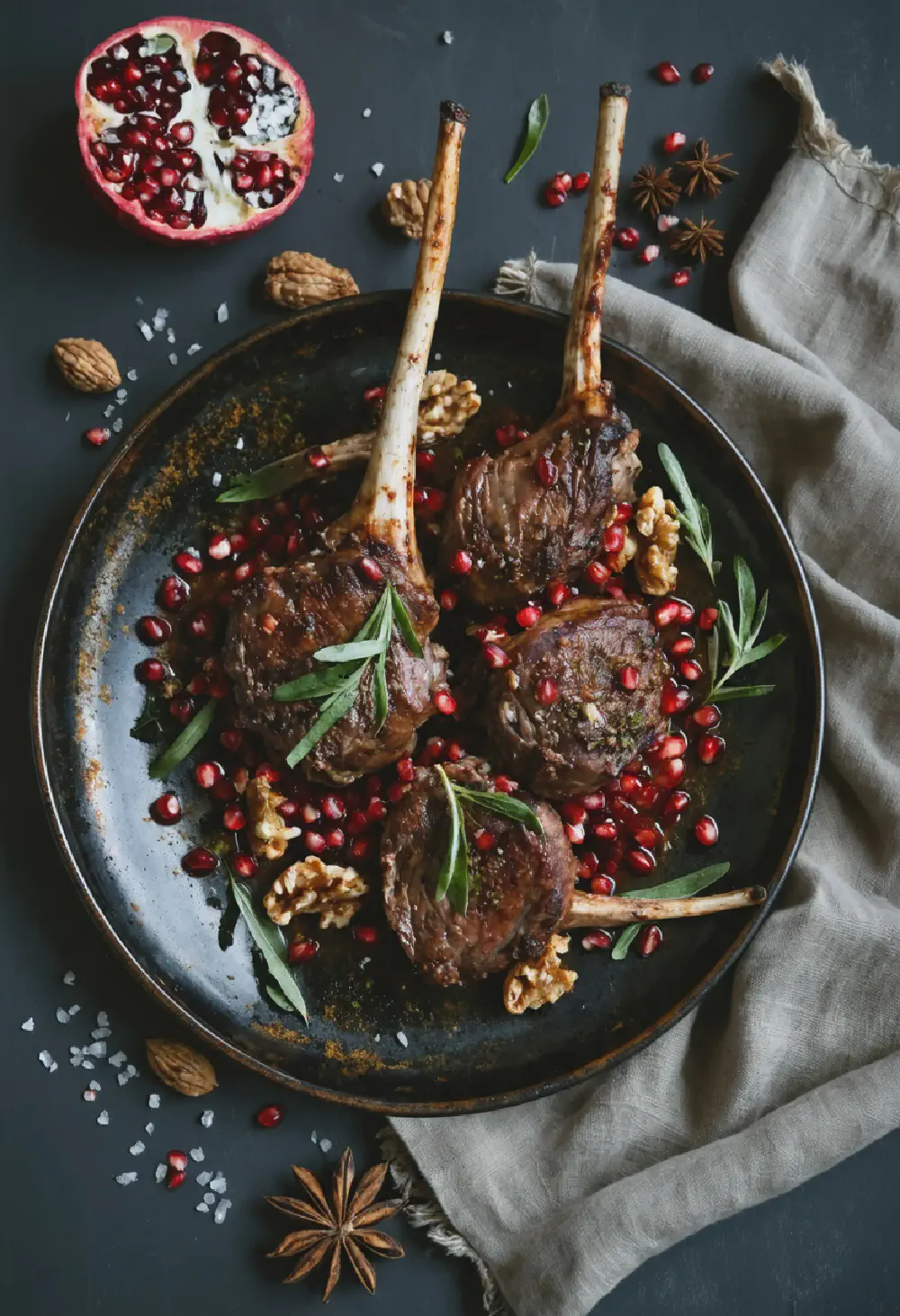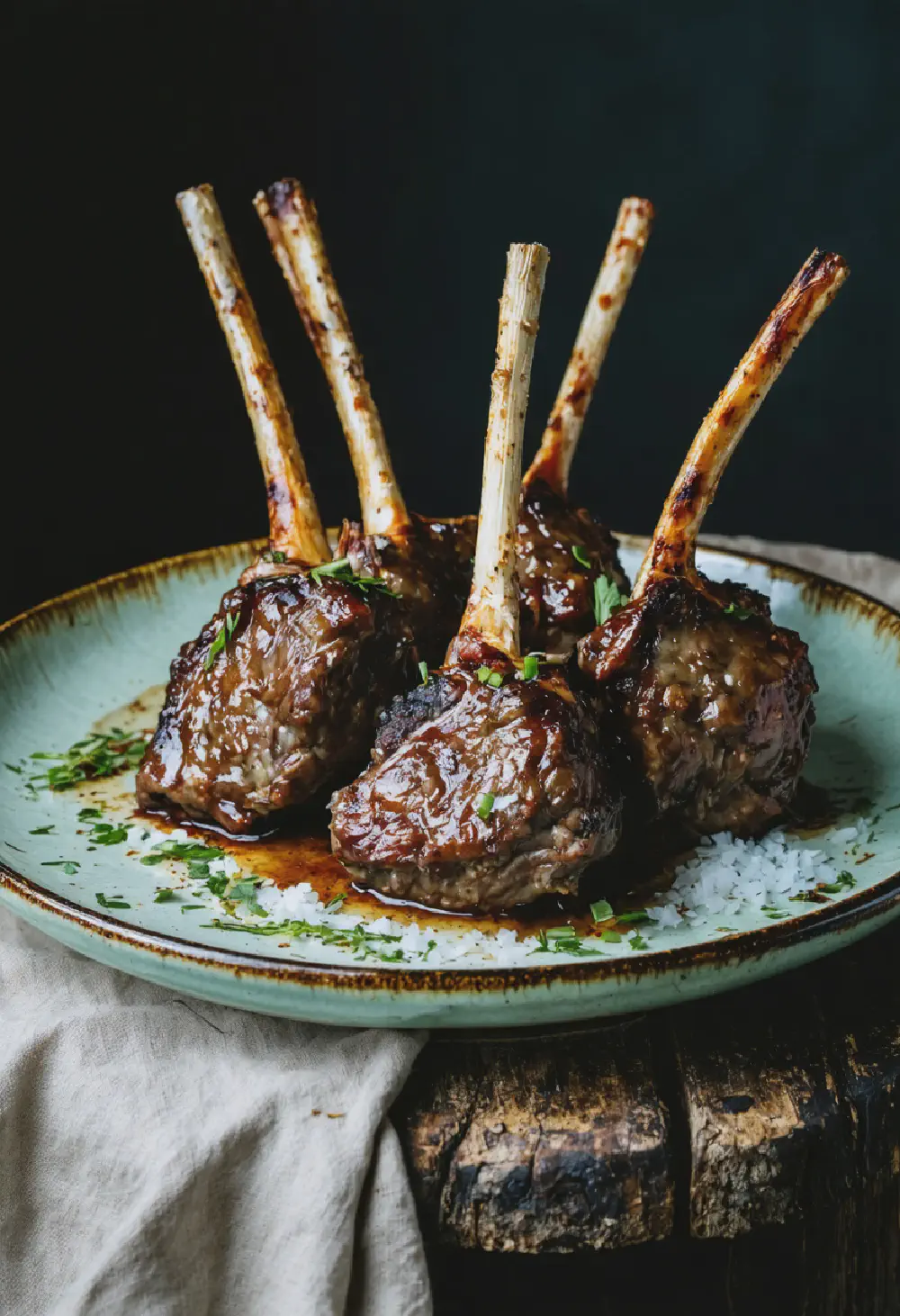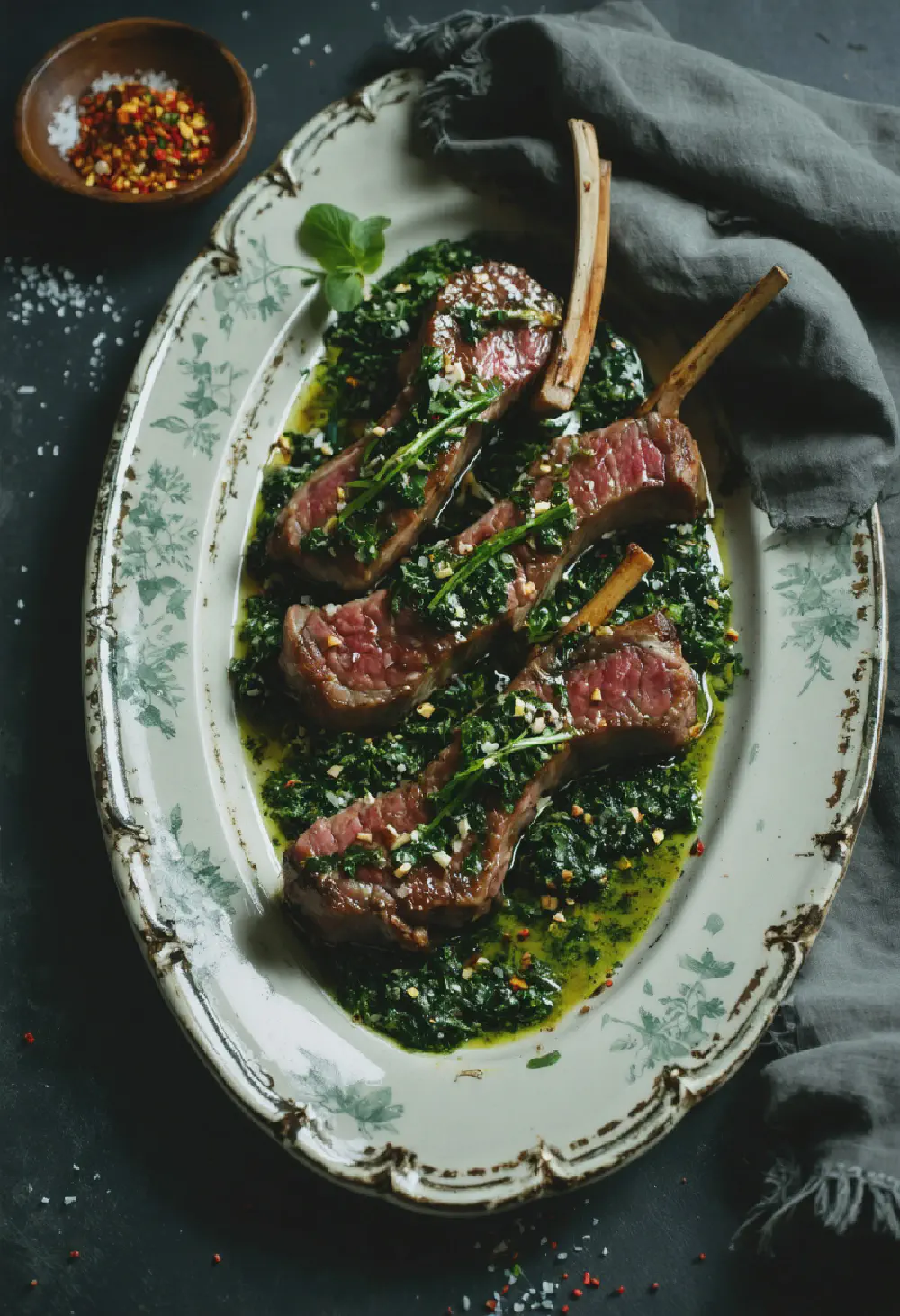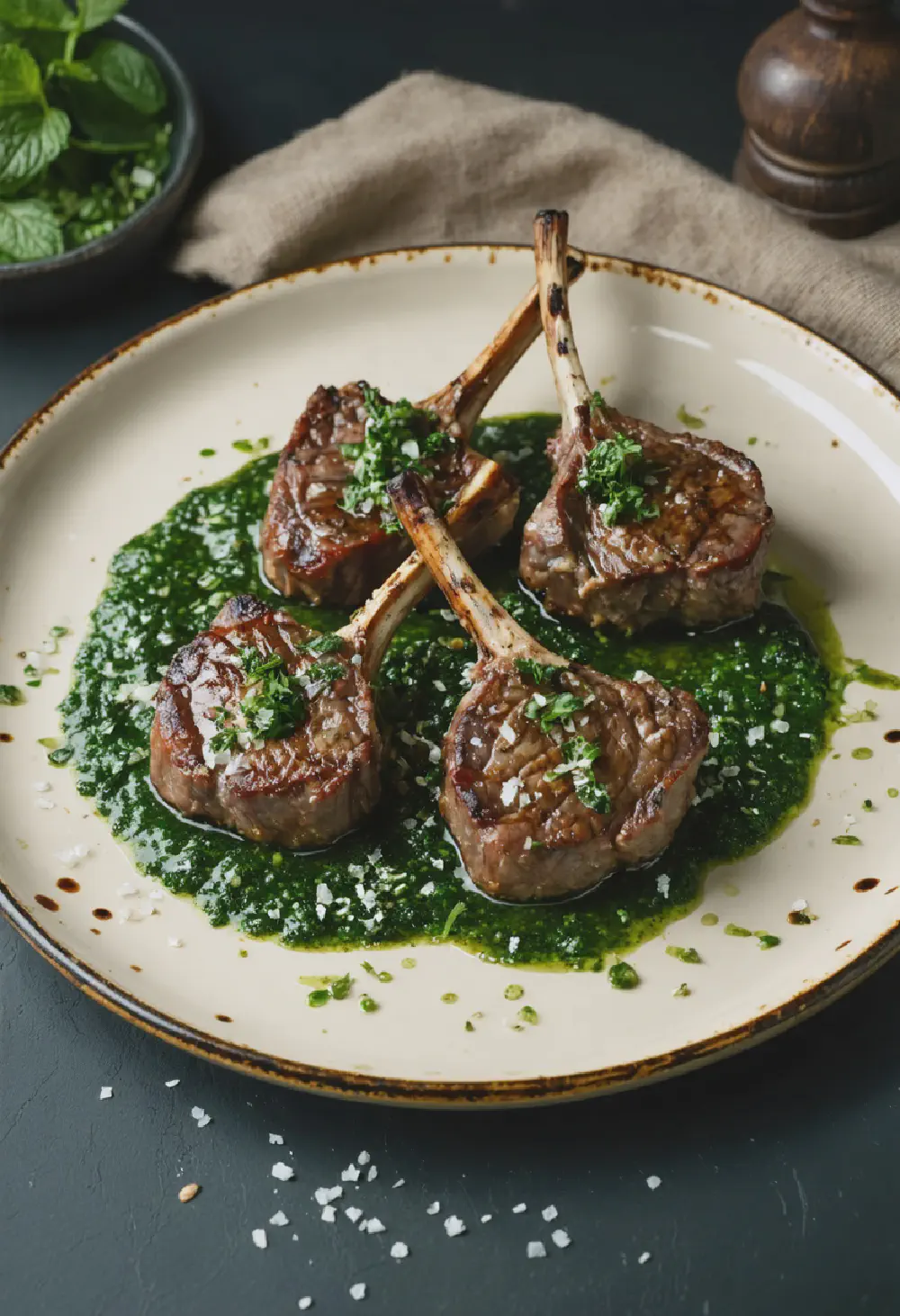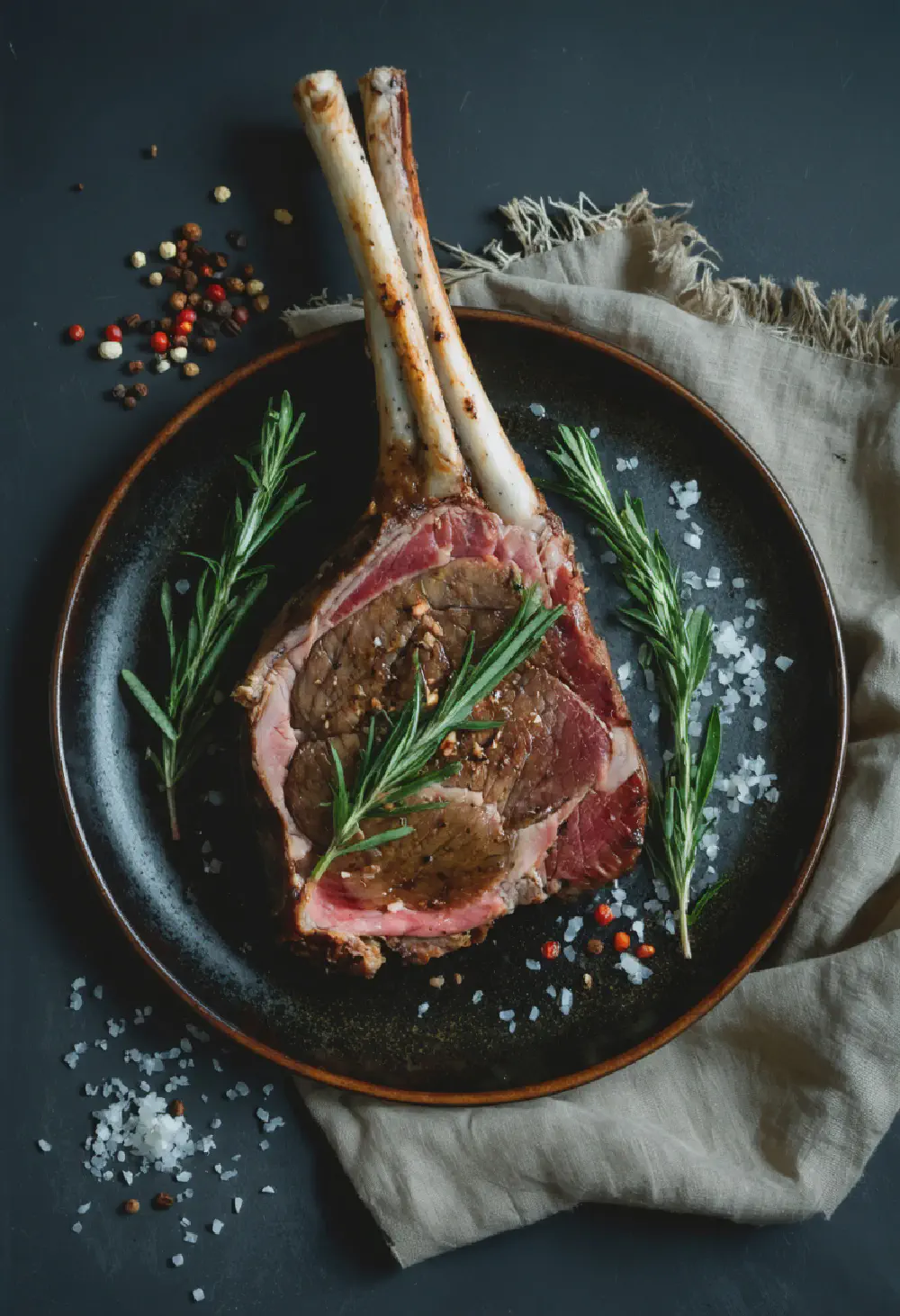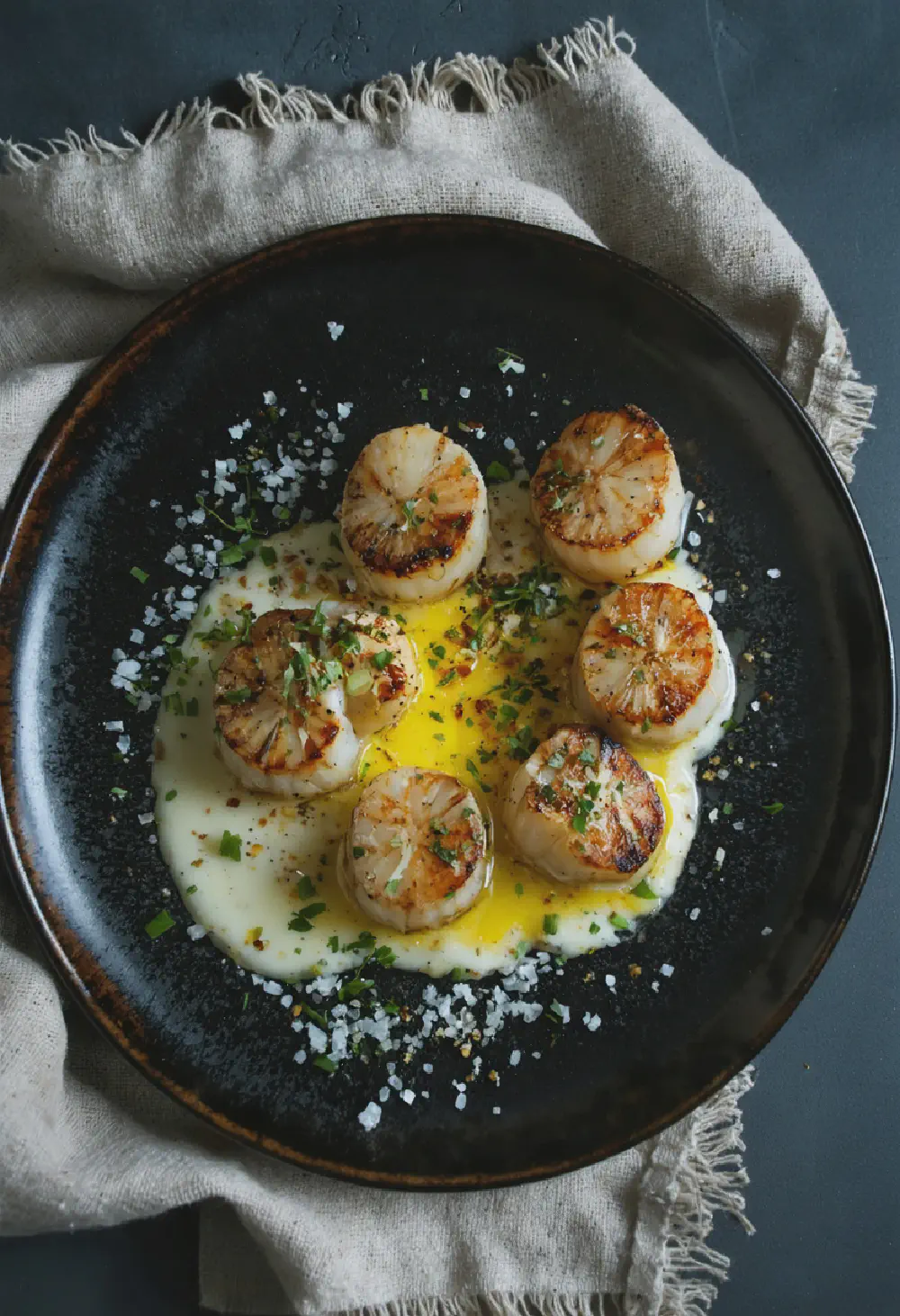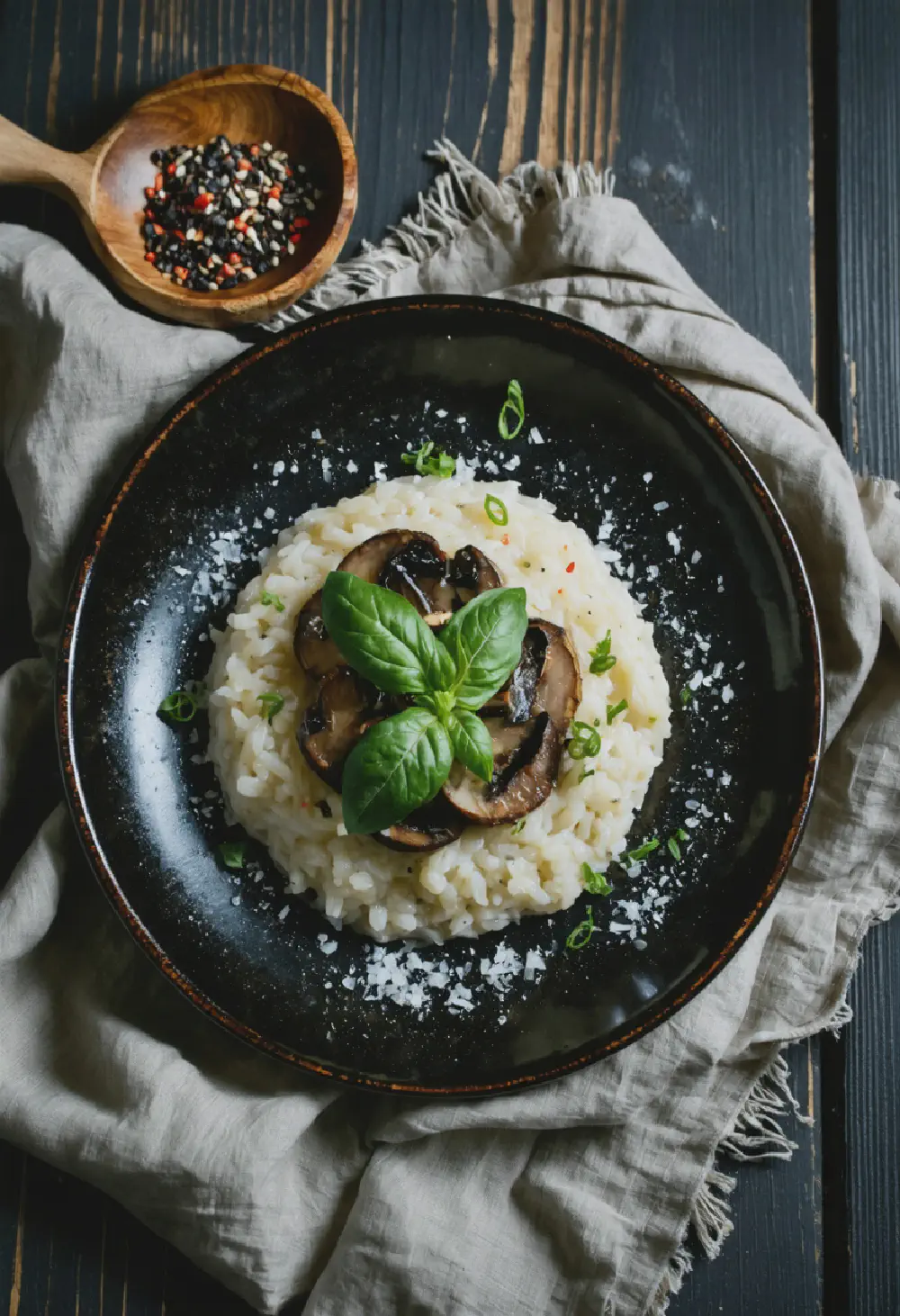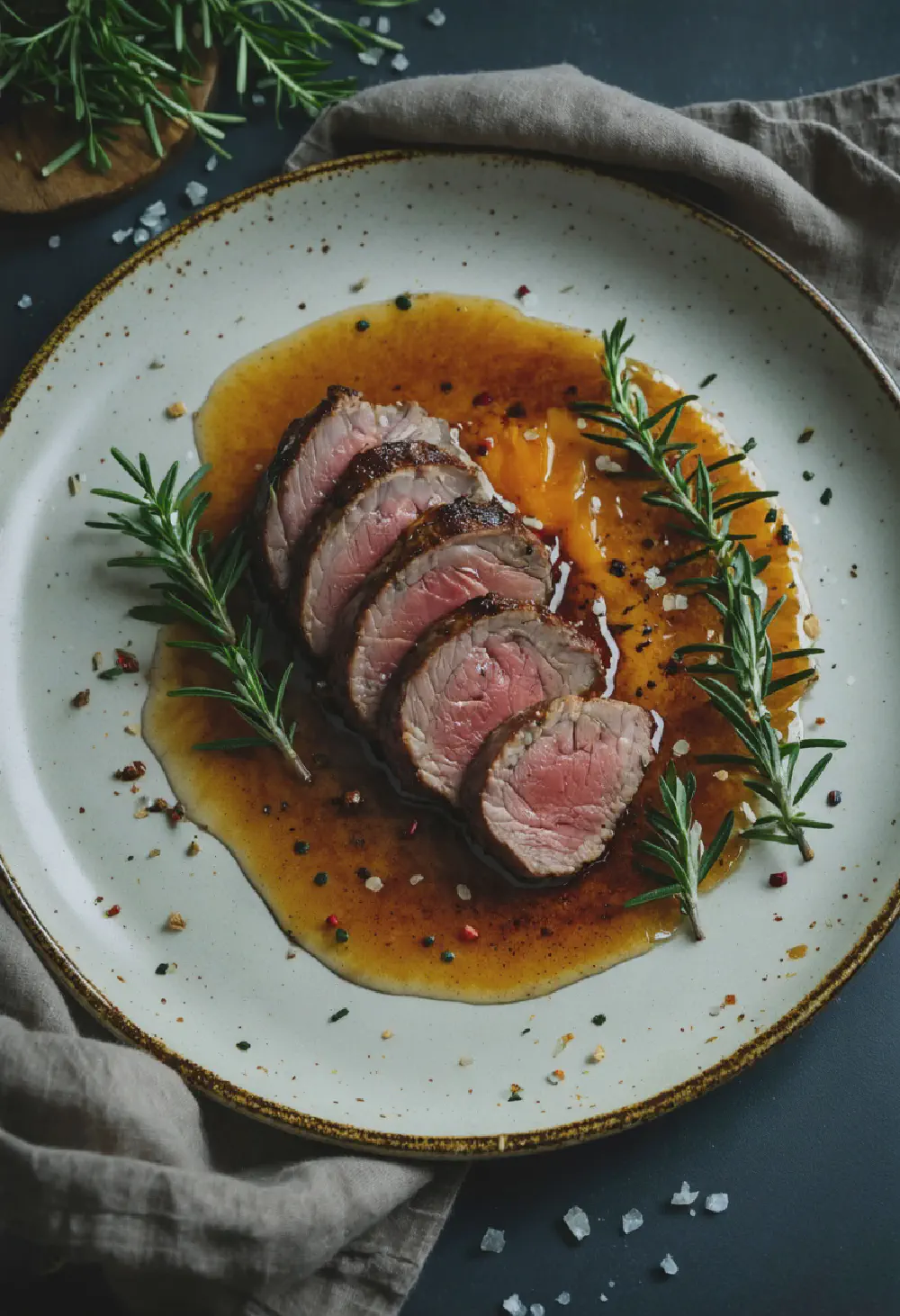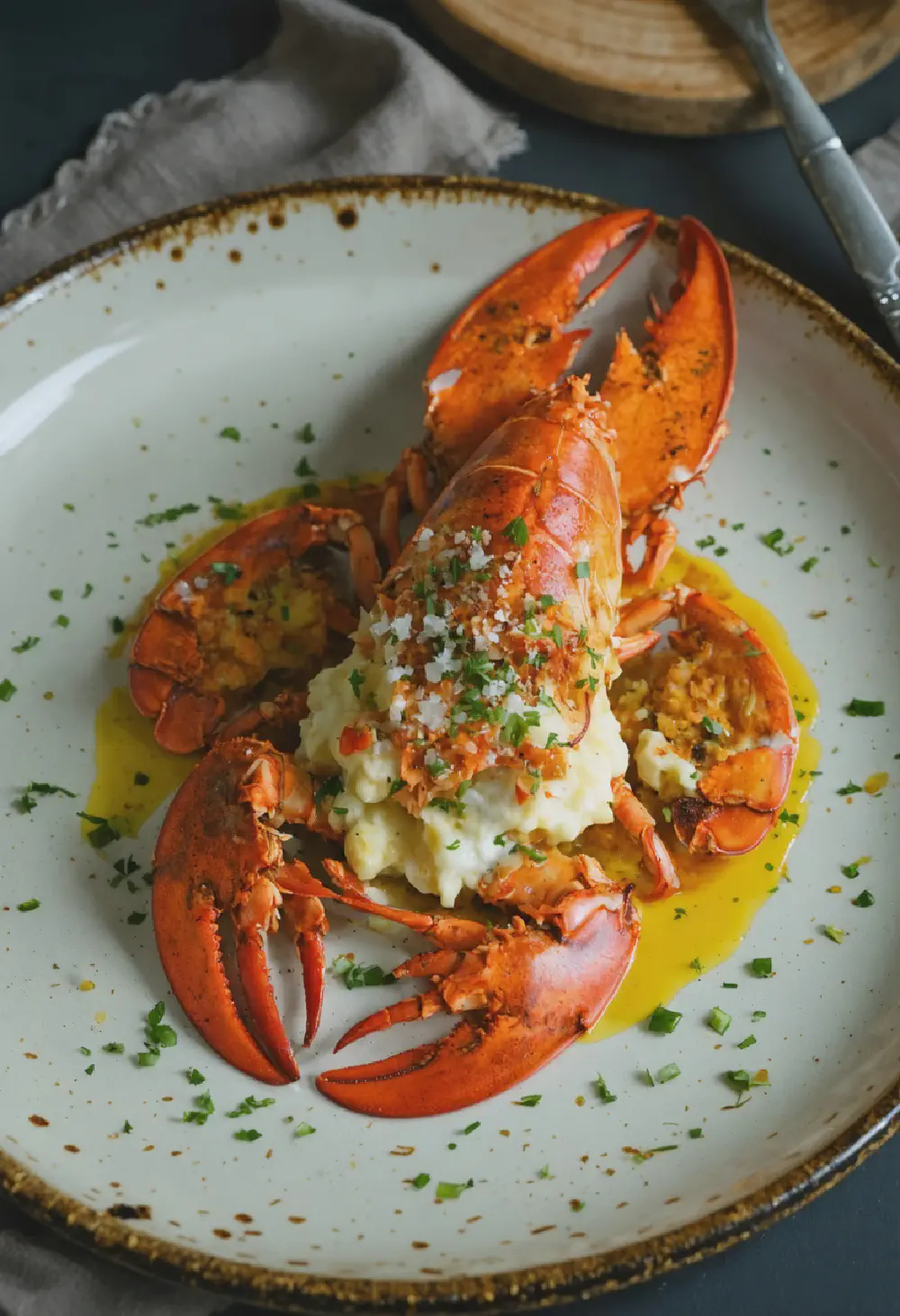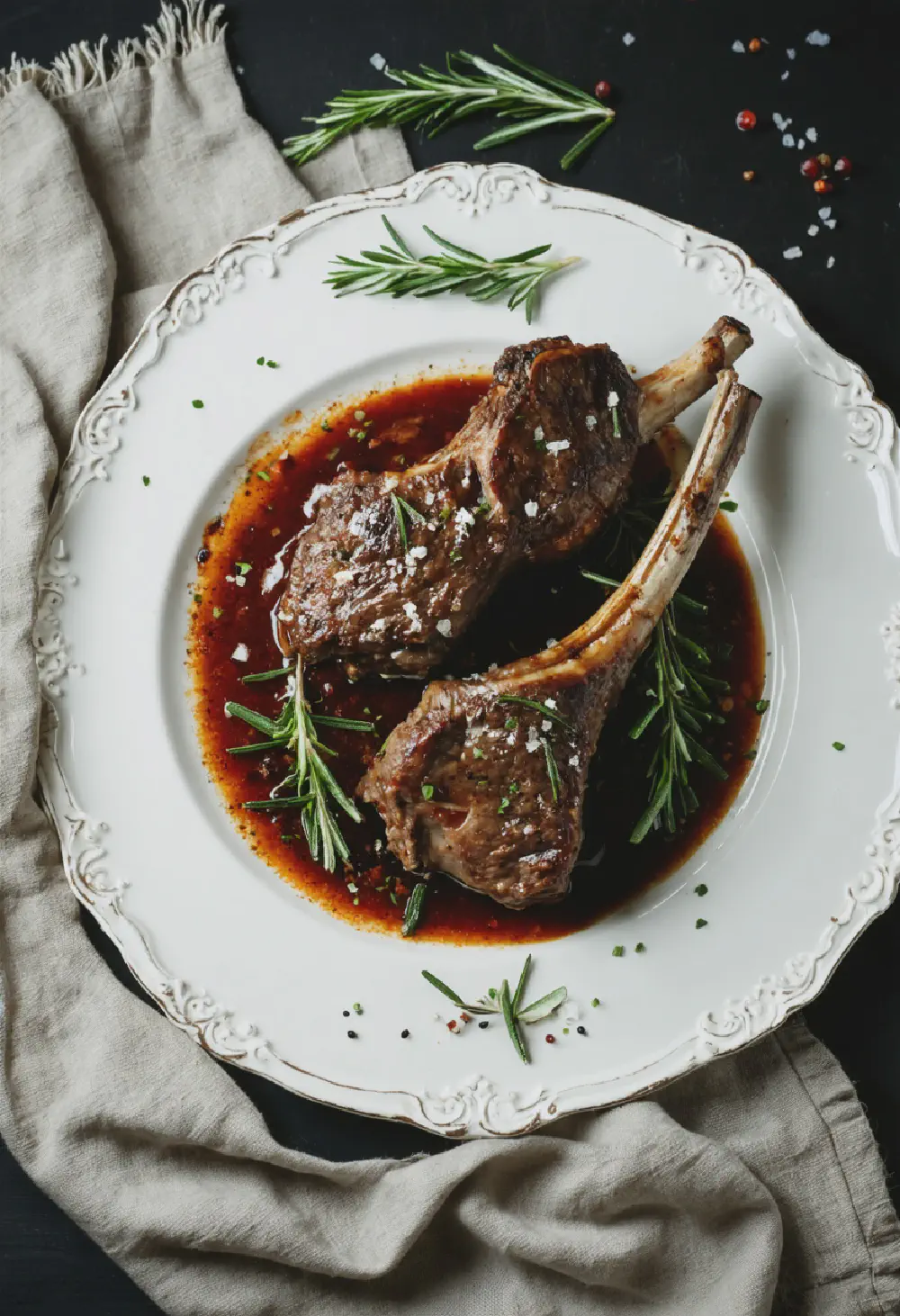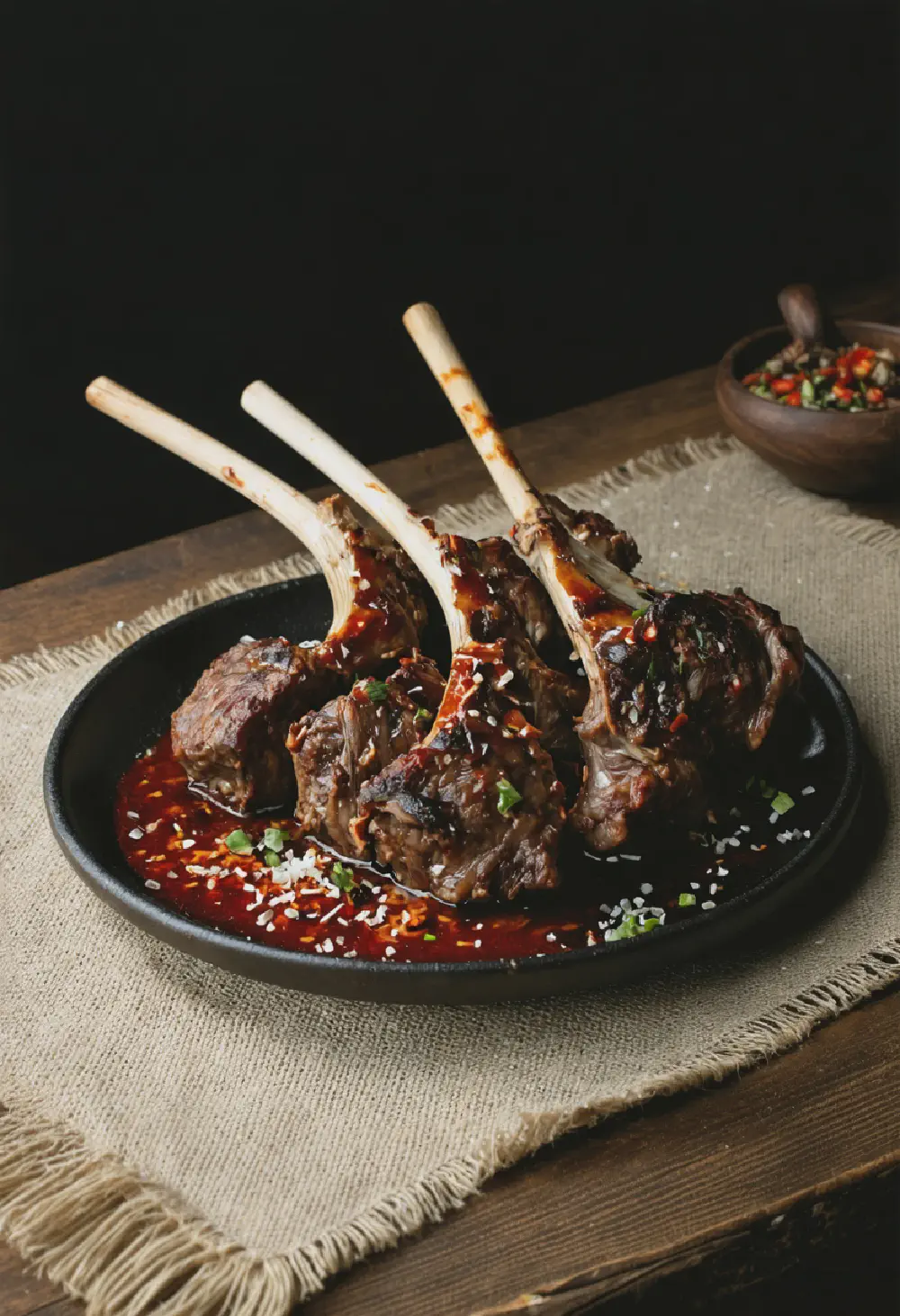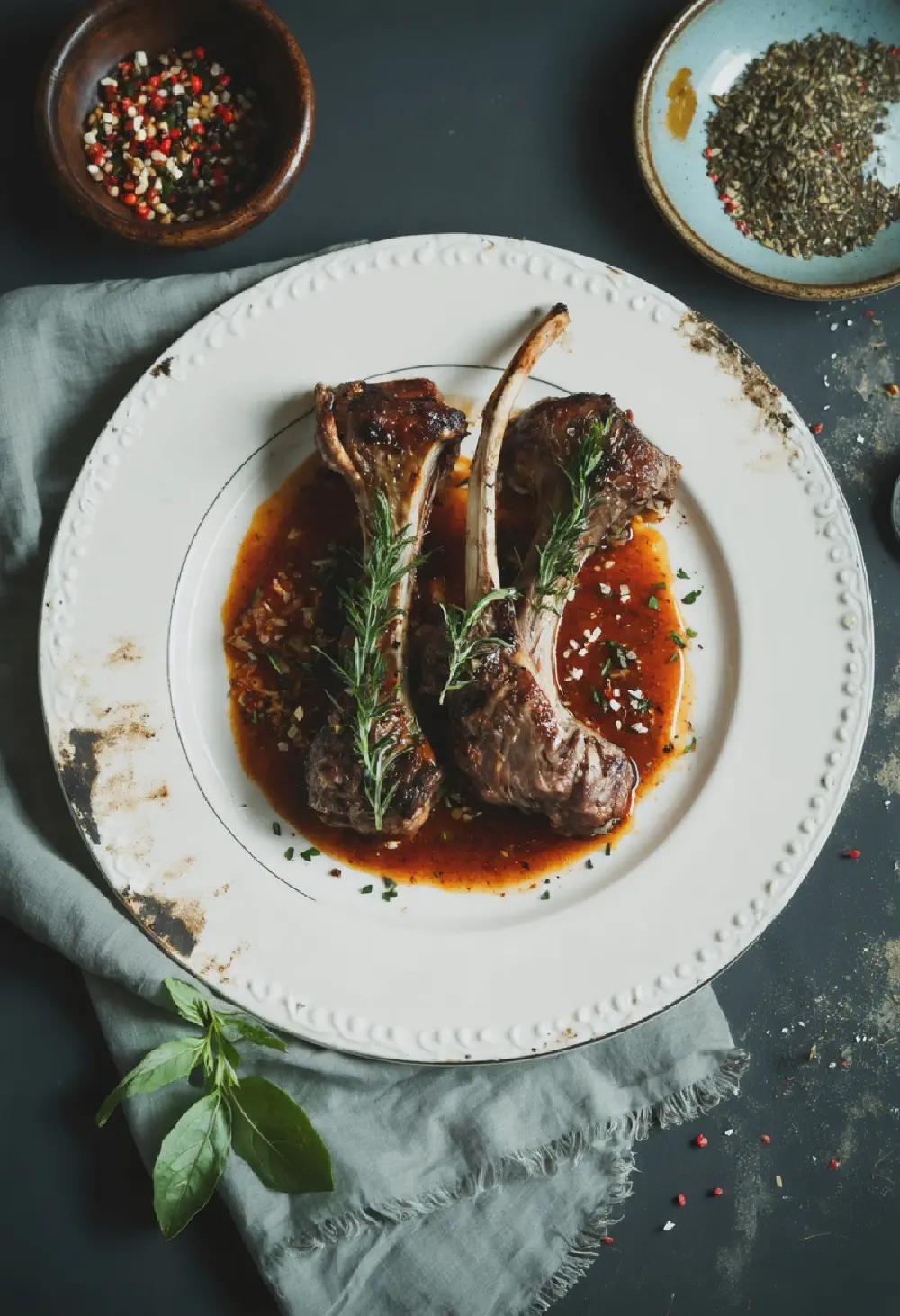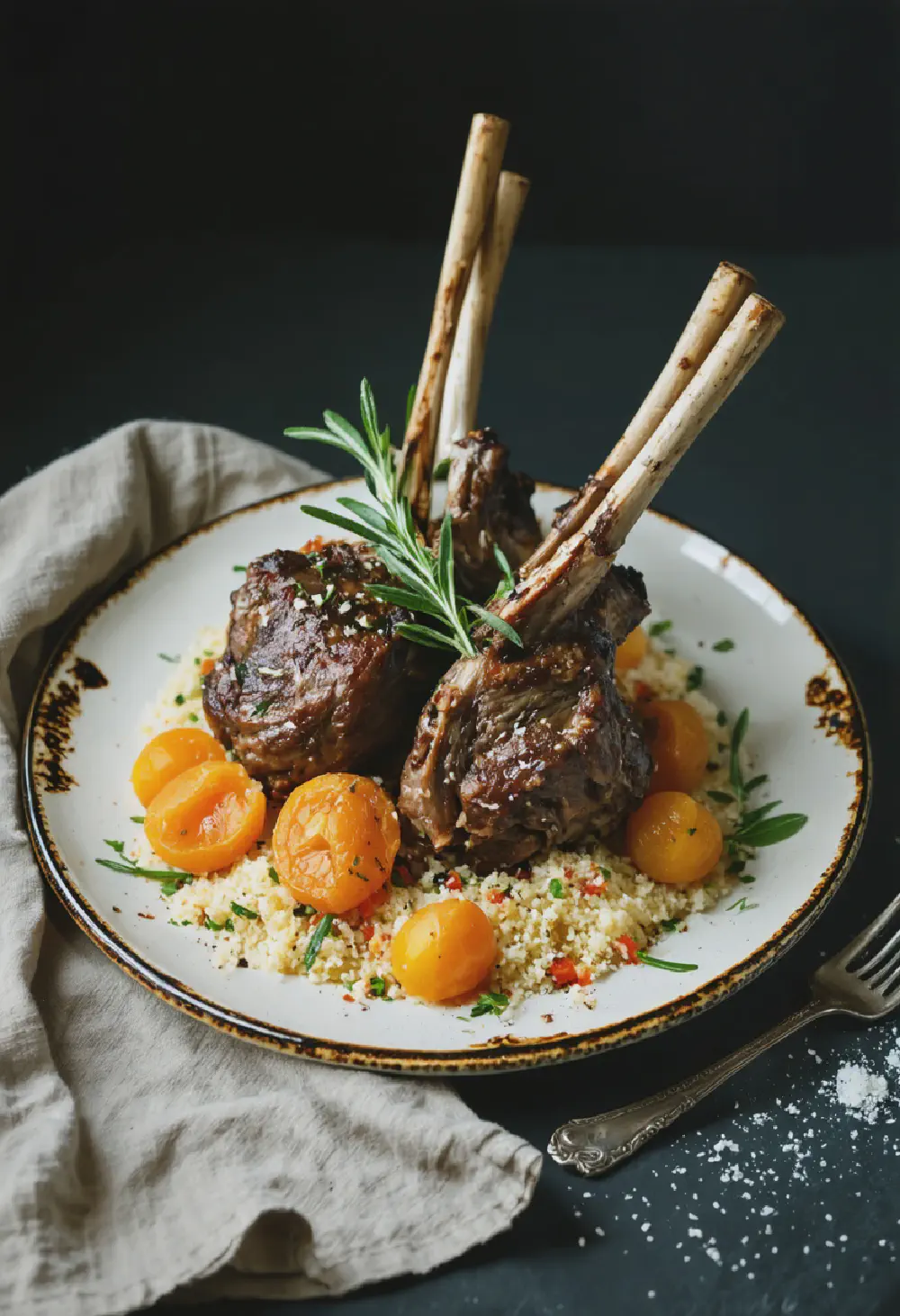Authentic Beef Wellington
45M
1H and 30M
- Makes 6 servings
- 1 kg (2.2 lbs) beef tenderloin, trimmed
- Salt and freshly ground black pepper to taste
- 2 tablespoons olive oil
- 500g (1.1 lbs) mushrooms, finely chopped
- 2 cloves garlic, minced
- 2 tablespoons fresh thyme, chopped
- 100g (3.5 oz) prosciutto slices
- 500g (1.1 lbs) puff pastry, thawed if frozen
- 1 egg, beaten
- Flour, for dusting
- Preheat your oven to 200°C (400°F). Season the beef tenderloin generously with salt and pepper.
- Heat the olive oil in a large skillet over high heat. Sear the beef on all sides until nicely browned, about 2-3 minutes per side. Remove from the skillet and let it cool.
- In the same skillet, add the chopped mushrooms, garlic, and thyme. Cook over medium heat until the mushrooms release their moisture and it evaporates, leaving a dry, paste-like mixture (duxelles). This should take about 10 minutes. Let it cool.
- Lay out a large sheet of plastic wrap. Arrange the prosciutto slices on the plastic wrap, slightly overlapping. Spread the cooled mushroom duxelles over the prosciutto.
- Place the cooled beef tenderloin in the center of the prosciutto and mushroom layer. Use the plastic wrap to help roll the prosciutto and mushrooms around the beef, encasing it completely. Chill in the refrigerator for at least 30 minutes.
- On a floured surface, roll out the puff pastry to about 1/4 inch thickness, large enough to wrap around the beef. Remove the beef from the refrigerator, unwrap it, and place it in the center of the pastry.
- Brush the edges of the pastry with the beaten egg. Fold the pastry around the beef, sealing the edges well. Trim any excess pastry and use it to decorate the top if desired.
- Place the wrapped beef seam-side down on a baking sheet lined with parchment paper. Brush the entire surface with more beaten egg.
- Bake in the preheated oven for about 40-45 minutes, or until the pastry is golden brown and the internal temperature of the beef reaches 50°C (120°F) for medium-rare.
- Remove from the oven and let it rest for 10 minutes before slicing and serving.
Authentic Beef Wellington: A British Culinary Masterpiece
History
The origins of Authentic Beef Wellington trace back to the early 19th century in England, named after the Duke of Wellington, Arthur Wellesley. This dish is believed to have been created to celebrate his victory at the Battle of Waterloo in 1815. The concept of wrapping meat in pastry, however, dates back even further, with similar dishes found in medieval cookbooks. Over the years, Beef Wellington has evolved, but it remains a symbol of British culinary tradition, often reserved for special occasions and festive gatherings. The dish’s enduring popularity is a testament to its rich history and the skill required to prepare it.
Taste Profile
Authentic Beef Wellington offers a complex and delightful taste profile that is both rich and nuanced. At its core, the succulent beef tenderloin provides a tender, juicy base with a deep, savory flavor. The mushroom duxelles, a finely chopped mixture of mushrooms, herbs, and sometimes shallots, adds an earthy and umami-rich layer that complements the beef perfectly. The prosciutto not only helps to keep the meat moist but also introduces a subtle saltiness that enhances the overall taste. Finally, the golden puff pastry encasing the dish adds a buttery, flaky texture that contrasts beautifully with the tender meat inside. Together, these elements create a harmonious blend of flavors and textures that make Beef Wellington a truly indulgent dish.
Cultural Significance
Within British cuisine, Authentic Beef Wellington holds a special place as a dish of celebration and sophistication. It is often featured at holiday feasts, weddings, and other significant events, symbolizing the grandeur and elegance of British fine dining. The meticulous preparation and presentation of Beef Wellington reflect the British appreciation for culinary artistry and tradition. As a centerpiece on the dining table, it not only satisfies the palate but also serves as a conversation starter, connecting diners to the rich history and cultural heritage of the United Kingdom. Its presence on the menu of upscale restaurants and its popularity in home kitchens alike underscore its enduring cultural significance within British culinary culture.
